| the
2013
Bayview YC One-Design Regatta from a Wayfarer point of view Sunday pics - 1: Anatomy & critique of a capsize recovery a.k.a. Well, that's easy for you to say!!! photos copyright of Marcin Chumieci of Photoelement ........ |
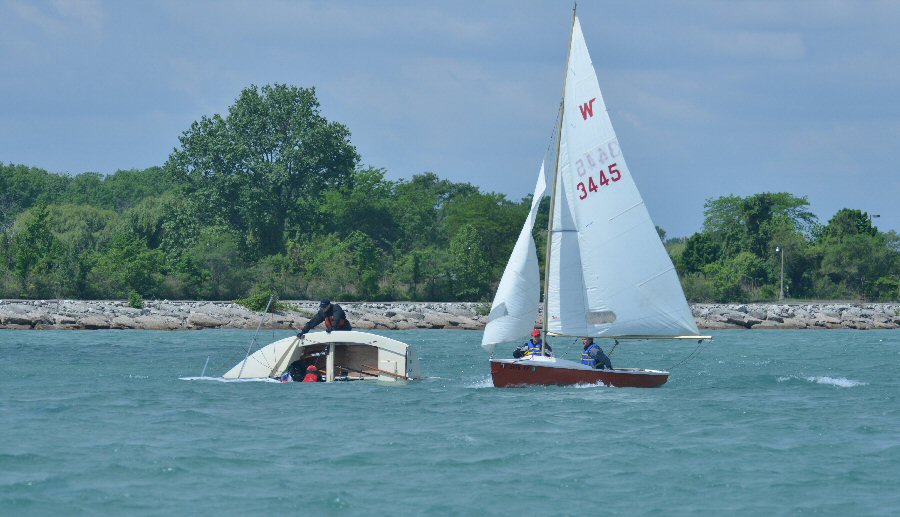 |
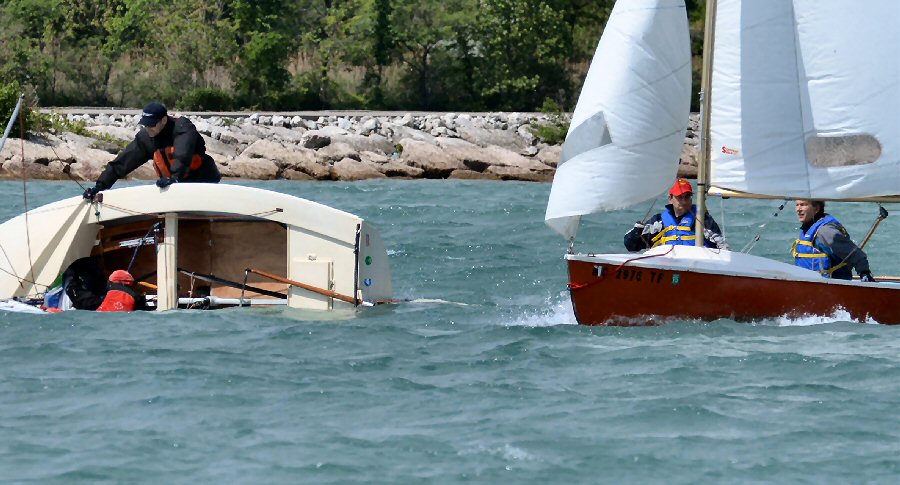 |
|
Sunday 2 June
2013,
Detroit River off the Bayview YC: Mark
Taylor and his
brother, Paul (W7673) have just capsized. Spinnaker
appears to have
been involved. Under the RRS and general sailing law,
Robert and Nikos
in W3445 would have an overriding duty to try to help
- if it appears
that help may be needed.
........1 SAFETY 1.1 Helping Those in Danger A boat or competitor shall give all possible help to any person or vessel in danger. Note also the following exchange I had with Robert: From:
Robert Mosher W3445
To: Al Schonborn
Sent:
Sunday, June 09, 2013 7:08 AM
Subject: RRS
Rule Assitance
Dear
Al
Would like your opinion. Do any of the following offset the need to give assistance under the rules?
Robert From:
Al Schonborn
Sent:
Sunday, June 09, 2013 8:26 AM
|
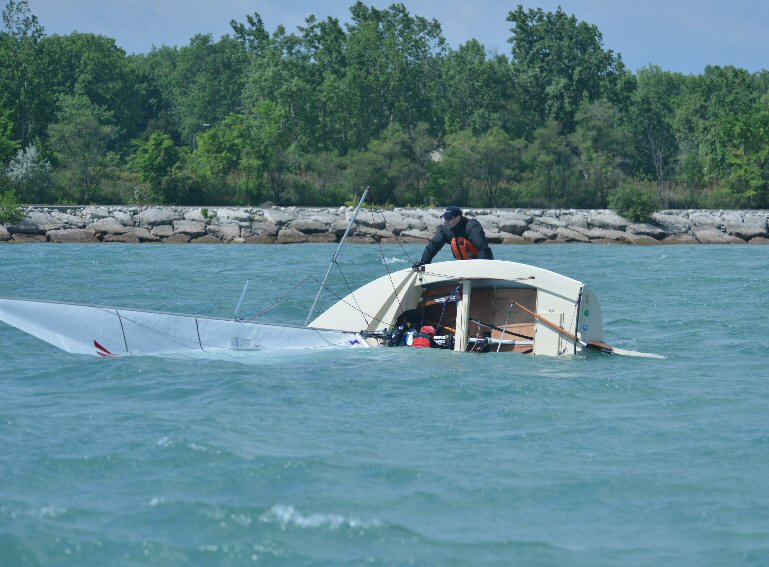 |
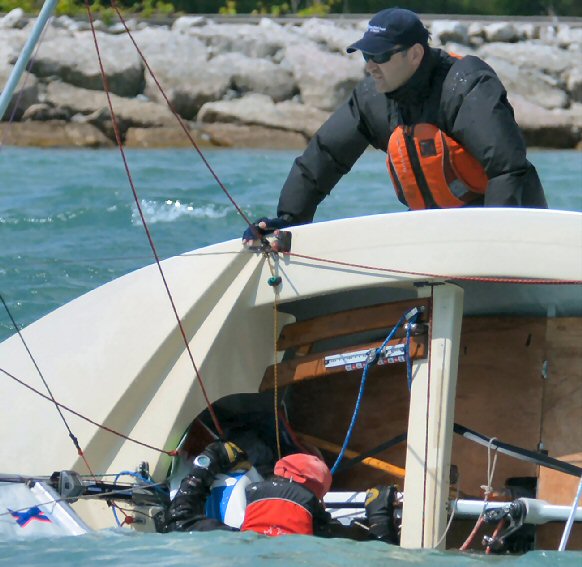 |
|
Crew Paul has
done job
#1 flawlessly: He is on the centreboard. As is usual
on a spinnaker
run, the helm was sitting to leeward - and in a way,
Mark still is. At
this point, Paul and Mark are perfectly placed to try
the scoop method
by having Mark stay where he is while Paul tries to
use his weight on
the centreboard to lever the boat back upright. I have
never done this
myself but have seen a 5-0-5 team do this very slick
manoeuvre at a
Pumpkin Regatta on Fanshawe Lake. At least in theory,
the scoop method
offers several advantages:
........
|
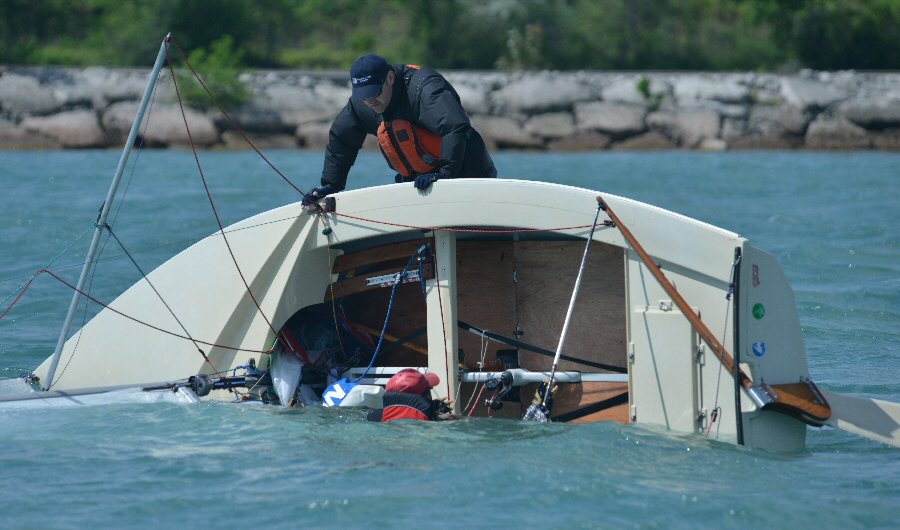 |
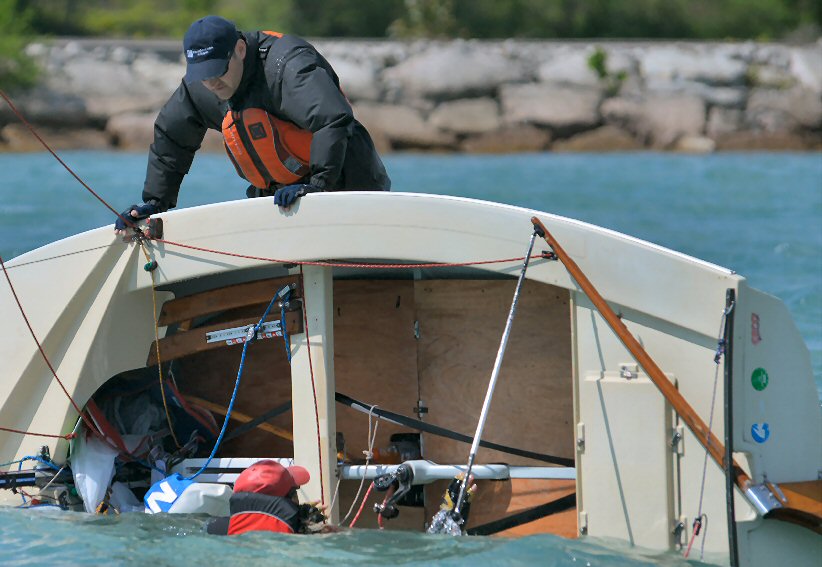 |
| Alas, Mark goes for
the
standard approach instead by ... ........ |
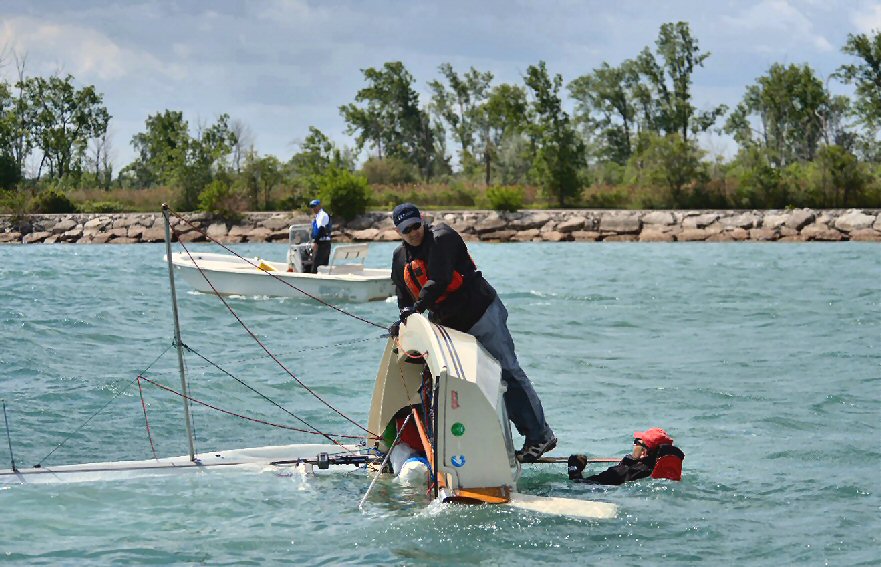 |
 |
|
... helping his
brother
with the board. Note that if Mark had stayed where he
was, there is the
distinct possibility that their boat would be upright
and being bailed
by now. As a man of regrettably extensive capsize
recovery experience,
I would recommend that here, the centreboard man move
his weight as far
from
the hull as possible to increase
leverage.
........ |
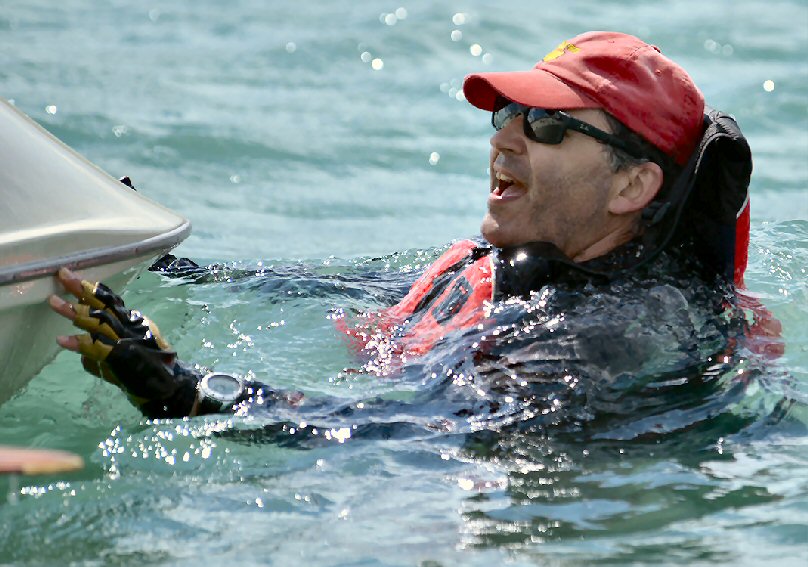 |
|
Ah, the CYA
would be
proud!! Last I looked they tell you to send the crew
to hold the bow
head to wind. In my opinion, this is worse than
useless because
........
|
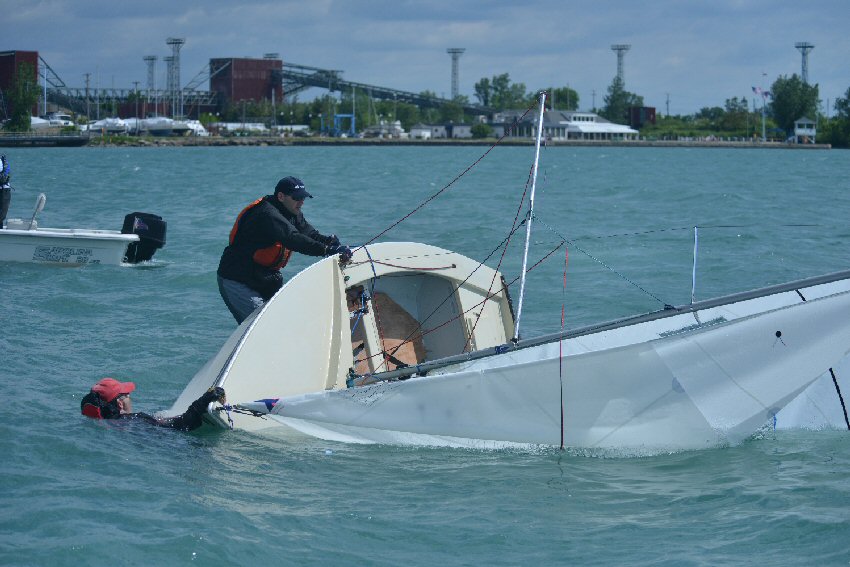 |
| See!!! Paul is
righting the
boat nicely with just his own weight. Mark could have
stayed inside the
boat where he started and now be making sure the sails are not making Paul lift any water. ........ |
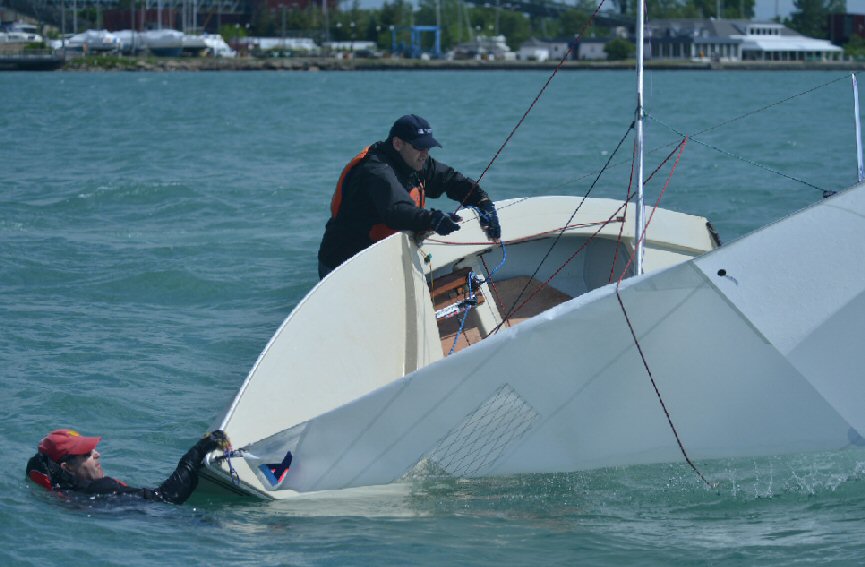 |
|
That jib could
be left
freer to luff and shed water!! Now Paul is about to
make his life far
tougher than it
needs to be: As the boat continues to right, Paul
should at all costs -
especially with no one inside the boat yet - make sure
he drags himself
aboard. I do this by grabbing something like the
centreboard box or the
thwart and sliding into the boat on my tummy as soon
as the righting
motion passes the point of no return. Better too soon
than too late.
Once or twice I have moved too soon but that costs
little: I
merely get back onto the board and try again. Failure
to get in while
one can easily do so leads to needless effort having
to be expended -
or worse - trying to climb in from the water.
........ |
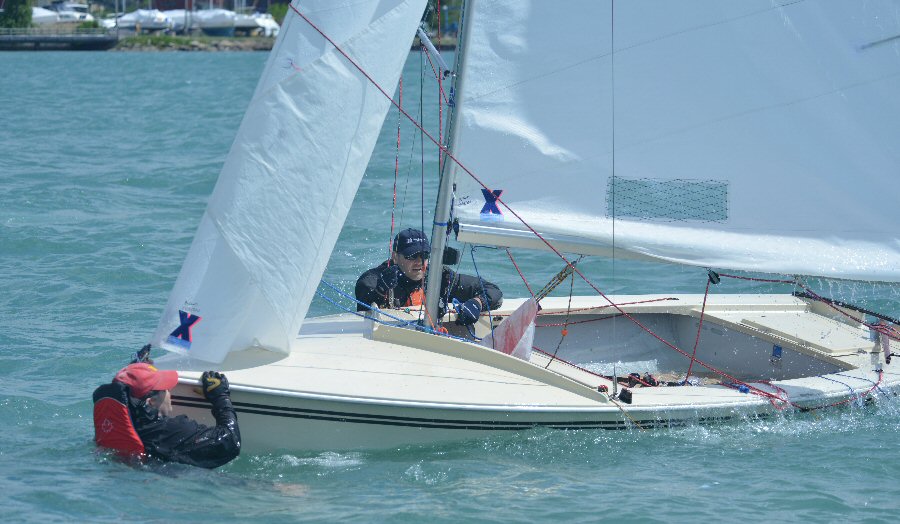 |
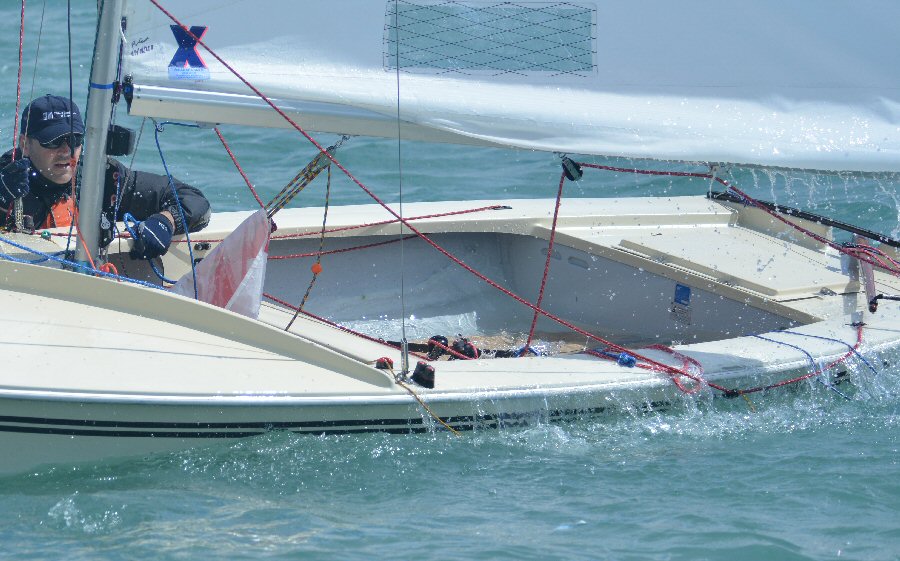 |
|
Here we can see
what
happens if you do not make sure someone is in the boat
as soon as it
rights. At my age (71) I now have little hope of
climbing back aboard
without some kind of help,
especially with a bulky life jacket on. I like to be
the first one in
but failing that I need to have someone heel the boat
towards my side
until the rub rail is immersed. Most sailors do not
realize that as
long as the boat is not moving through the water there
is no danger in
doing this: the person already in the boat merely
moves weight towards
me until I can more or less slide aboard. Once half of
me is in, my
nervous crew can relax and (try to) level the boat out
if he must.
........ |
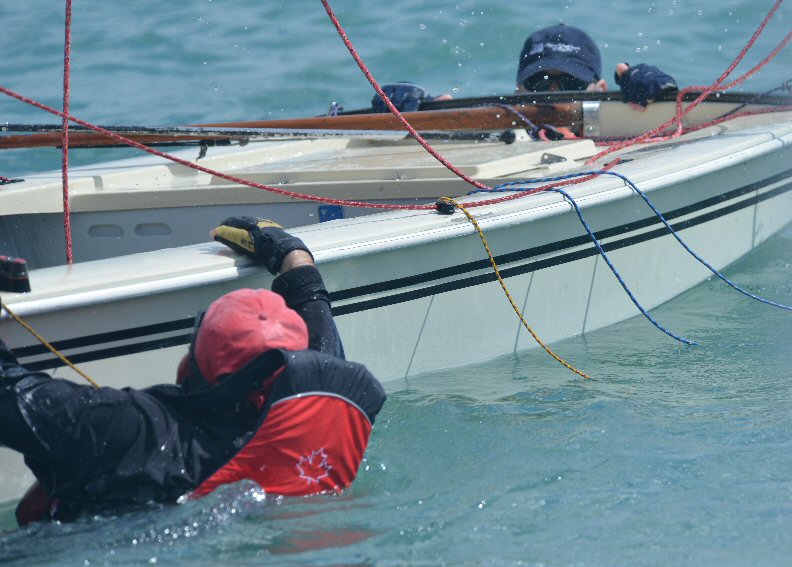 |
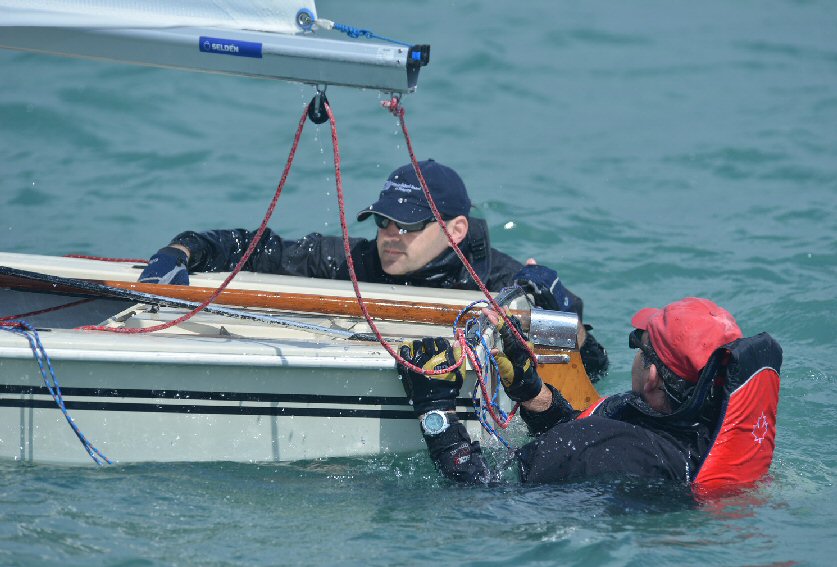 |
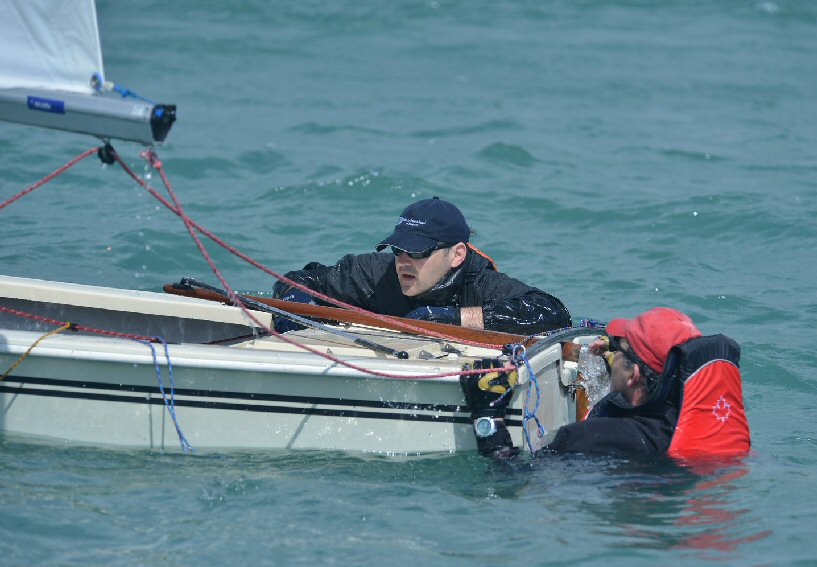 |
|
Many sailors
prefer to
get back aboard over the transom - especially when no
one else is back
aboard yet. Here you can see Mark trying to keep the
boat level as
young Paul works to get a leg up - so to speak. In my
experience, it is
perfectly possible to slide back aboard without risk
of capsize while
the boat is dead in the water even if no one is in it
yet.
........A danger with both crew members being in the water at the stern (above) is that this tends to point the boat downwind and make it begin to insist on sailing away. It is well nigh impossible to keep a water-filled boat that has begun to sail off downwind from re-capsizing, and twice as tough to do so from the position in the water that Mark and Paul are in. |
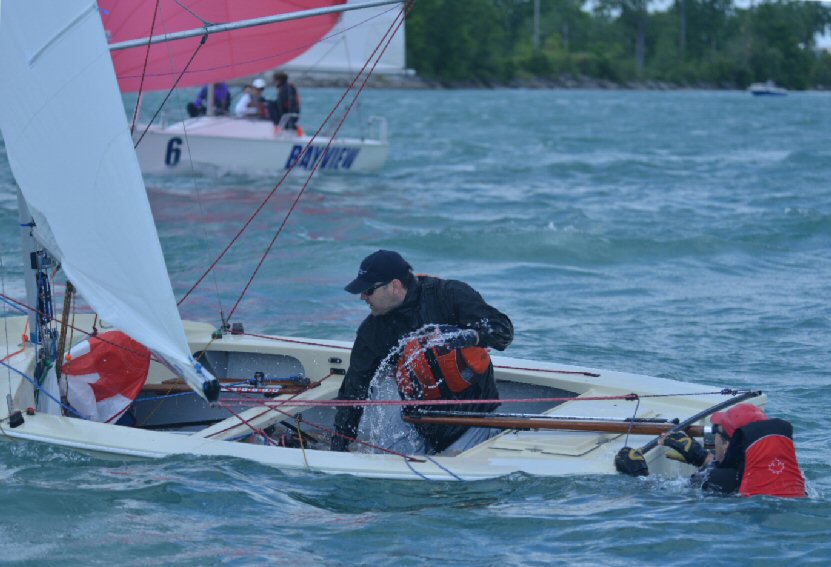 |
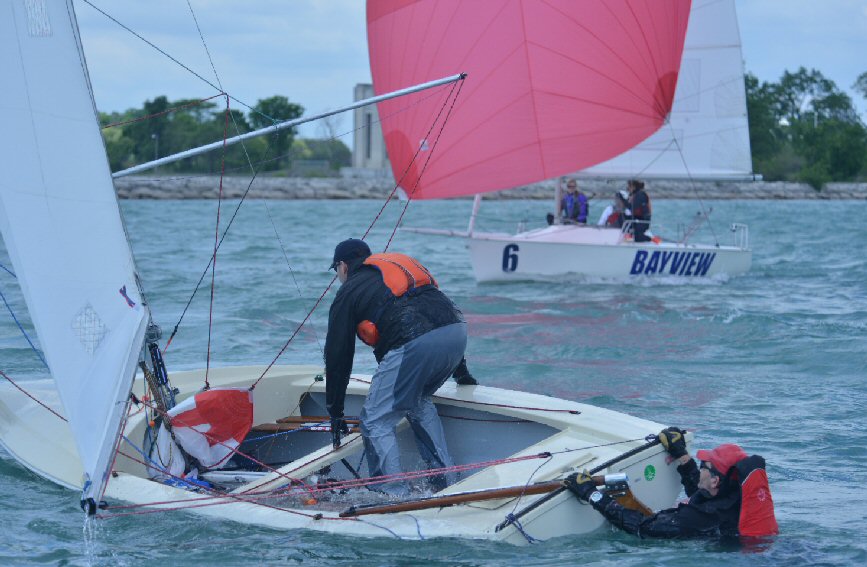 |
|
Here Paul has
nimbly
climbed back aboard but Mark is acting as a sea anchor
that will keep
the bow pointed downwind and the boat sailing.
Regardless, the absolute
first
thing that should happen after the boat is
righted and somebody is
back aboard, is that the board should be fully
raised. Note
how W7673 is already starting to sail away with Mark
making a wake and
Paul looking suitably nervous.
........In Paul's shoes, I would dive for the board and bring it fully up. Immediately thereafter I would go to the stern (the preferred place to be in a boat full of water, anyway), grab one of Mark's hands and drag him forward along the starboard side until he is in the water more or less opposite the thwart. Taking Mark's drag off the transom, letting the sails luff and keeping the board up will allow the boat to stabilize itself beam-on to the wind and dead in the water, with sails still luffing and no capsize risk. Now that the boat is stabilized as described, Paul can safely heel the boat to windward until the rub rail is immersed and he can drag his helm back aboard like a caught fish. At this point, both can relax and even have a beer if so desired. The boat will look after itself. The only drawback here would be that those lovely new Mike McNamara sails are of course flogging and losing pristineness with each minute they do so. It occurs to me that heaving to should be possible in these conditions. That would considerably reduce the wear and tear and permit one to enjoy one's beer in true peace.  2013 Midwinters: Tony Krauss starts to bail as Uncle Al looks on. Boat stabilized with board full up and my lovely 2013 Worlds Mike Mac sails flogging themselves to death. I can see no reason why next time I can't heave to. 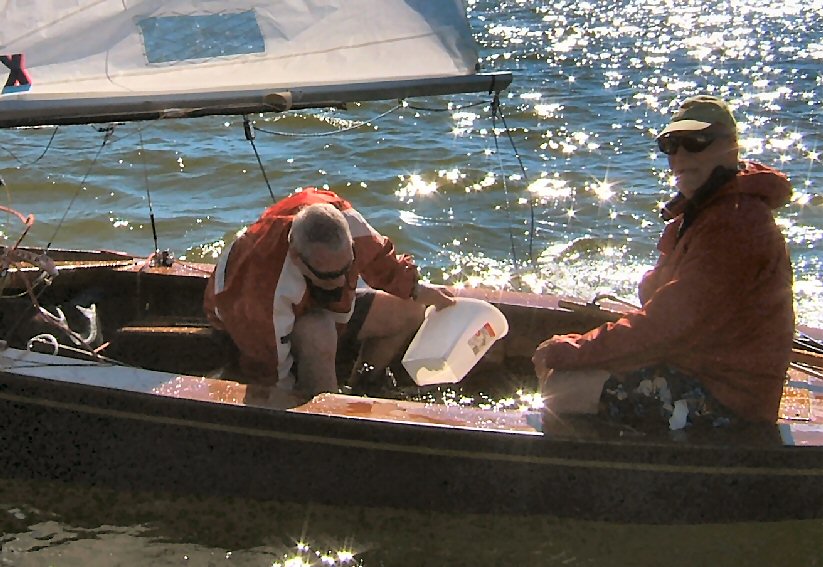 Sooner or later the fun will have to be curtailed and bailing will have to start. I fortunately have a heart condition and so can in good conscience ask my crew to bail - see photos above from this year's Midwinters where you can also see that our board is full up. Having the board full up, has the additional huge plus of plugging most of the CB box which tends to cut bailing effort in half especially if you don't have slot closure strips. Frank Goulay and I did this in six-foot chop at the 1992 Worlds off the Isle of Wight and Frank had that boat dry in two shakes of a lamb's tail. In the instance above, I did redeem myself slightly by offering to open Tony's beer for him ... |
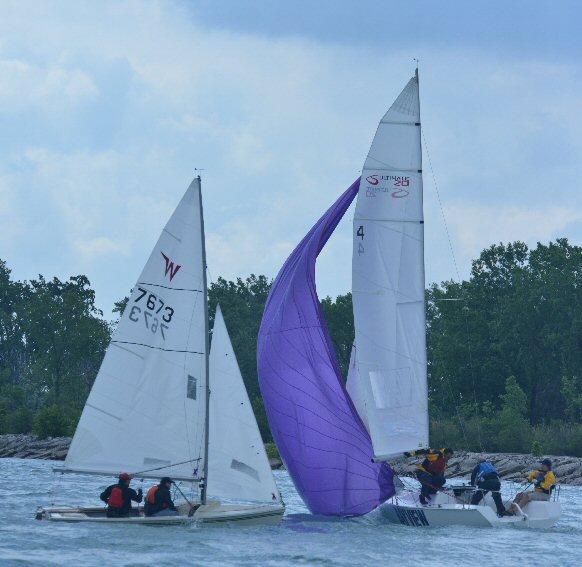 |
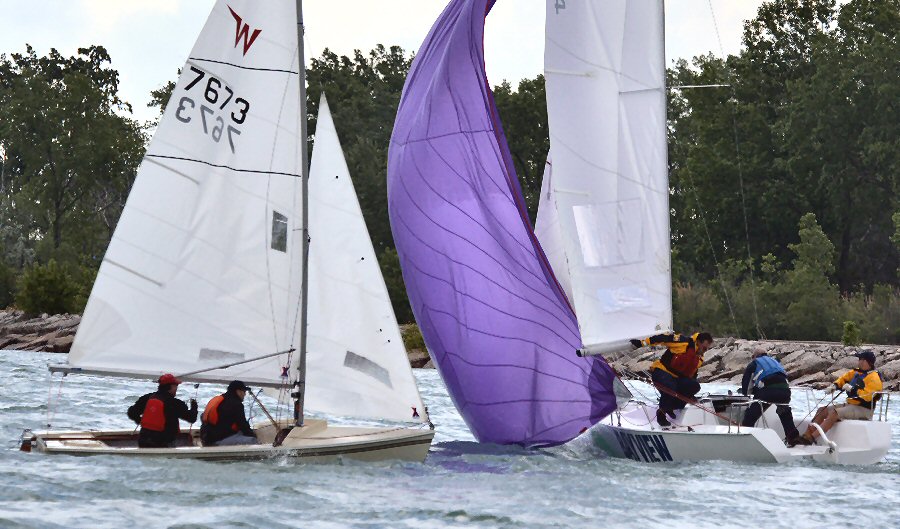 |
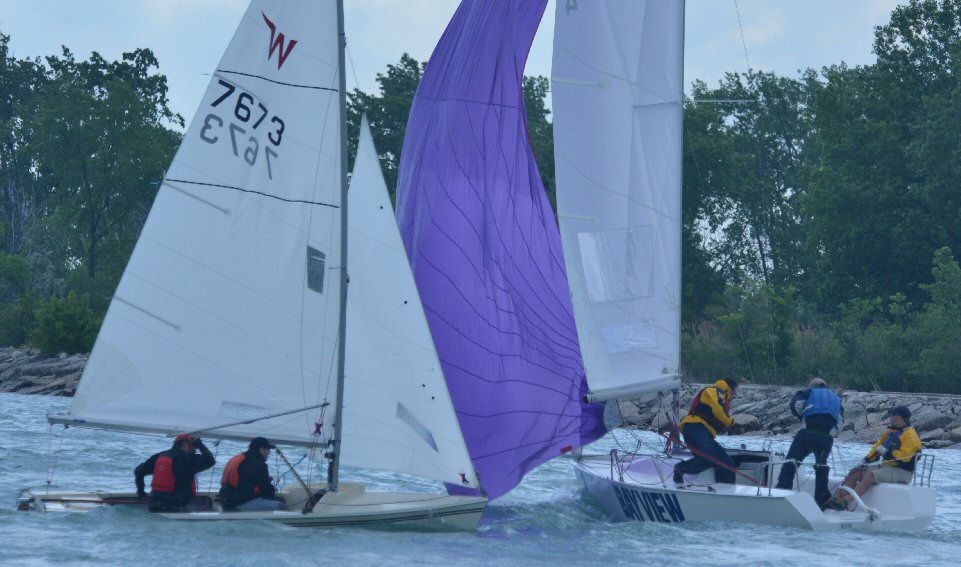 |
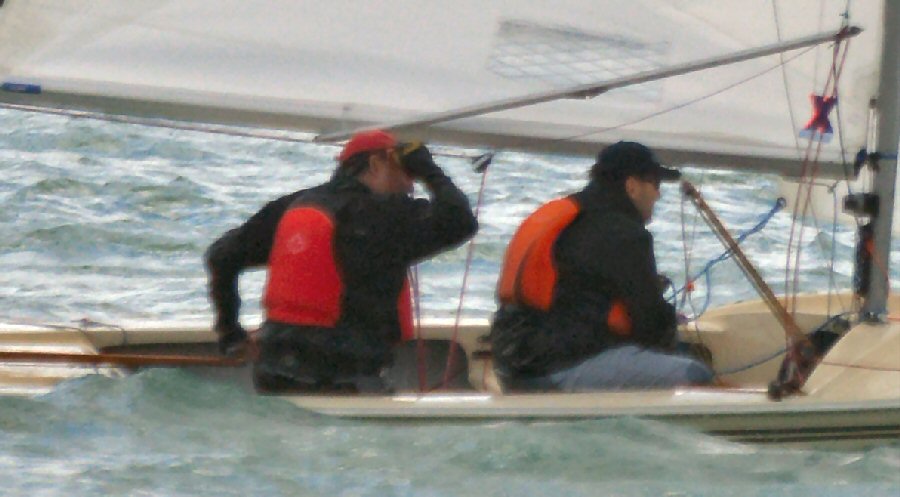 |
| Here the Taylors are
beginning to sail upwind with the boat still quite low
in the water. The threat of being run down by an Ultimate 20 can be a motivator of sorts, I suppose? ........ |
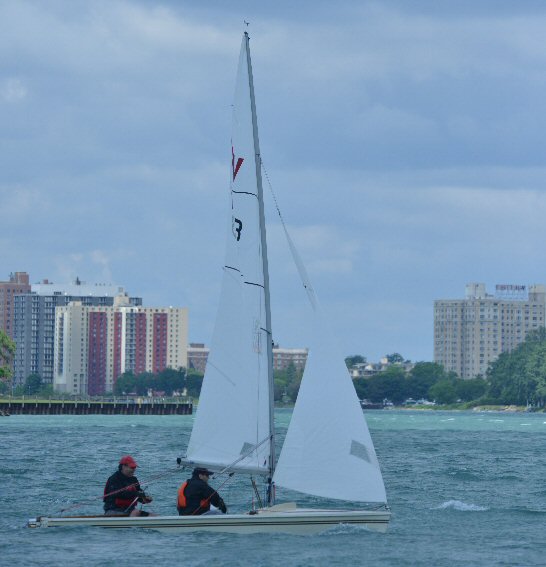 |
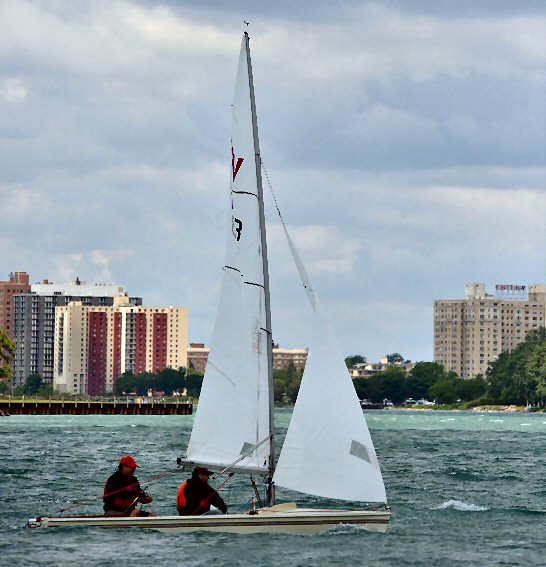 |
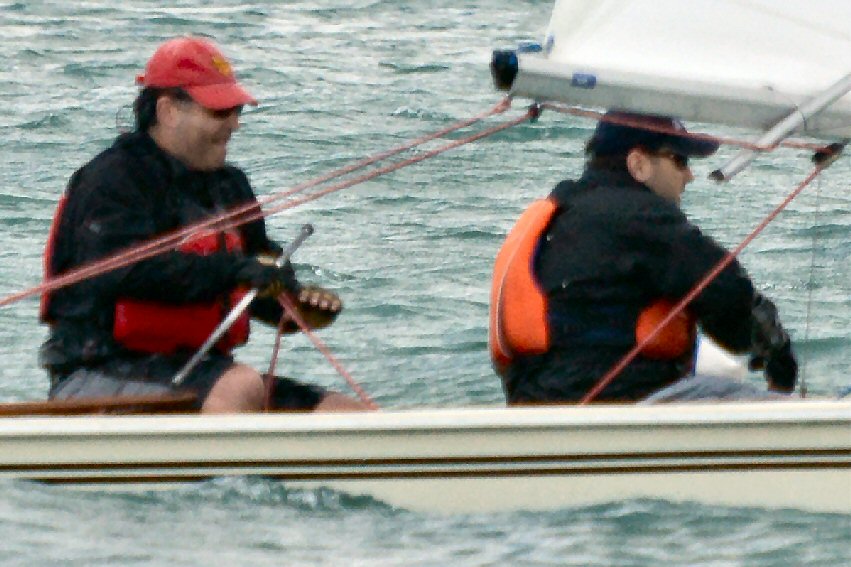 |
|
Trying to get
the
bailers working? Sitting way aft in a boat this full
of water as you
try to sail it dry is a great safety play. Moreover, I
have heard Scott
Town, one
of our better heavy air sailors ever, suggest that it
would be worth
trying to sit both crew members on the aft tank right
after righting
the boat, cranking the sails in on a broad reach and
getting water to
gush out over the aft tank and transom - as well as
through the bailers.
........ |
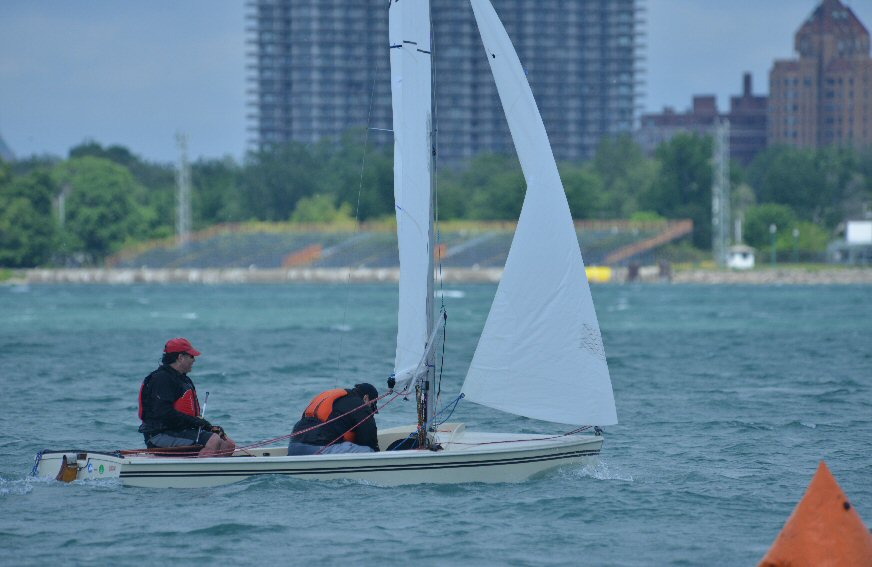 |
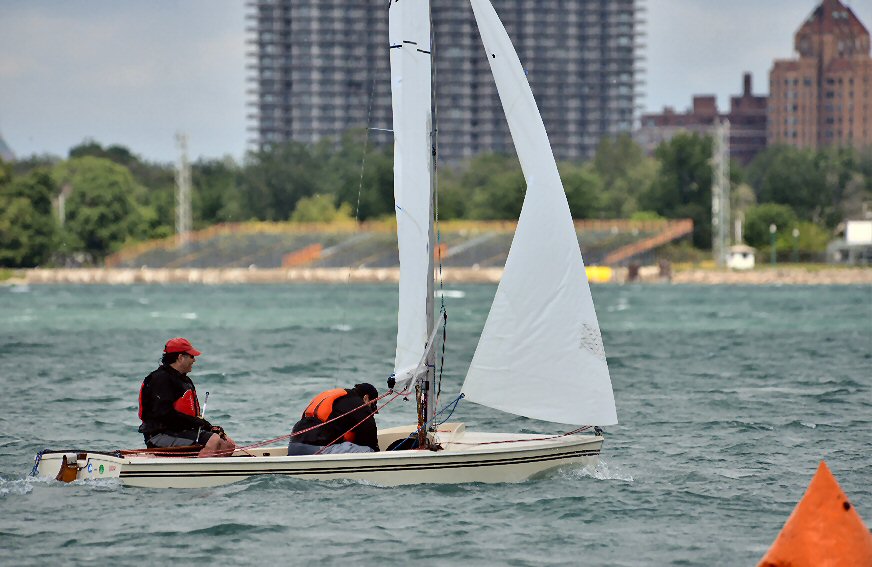 |
| Once the boat is again
moving this fast while being this low in the water, I
begin to feel
nervous and would move weight aft to get the pointy bow
out of the
water as
much as possible. Otherwise, the slightest heel can
easily overpower
the rudder and you could re-capsize. |
| next pics page return to index page |